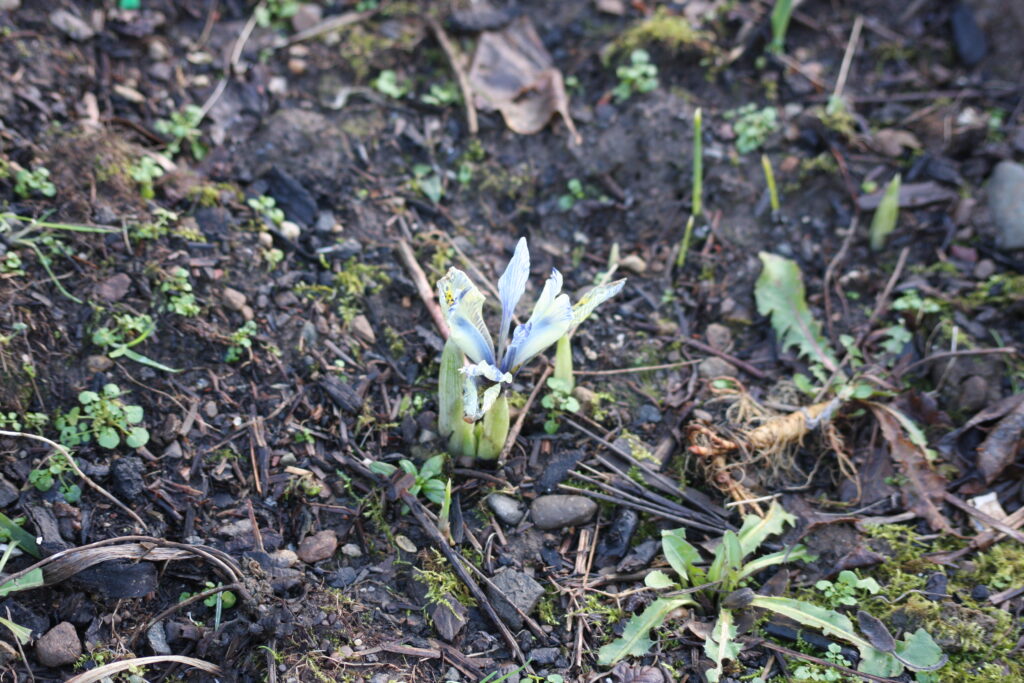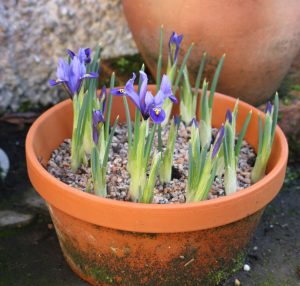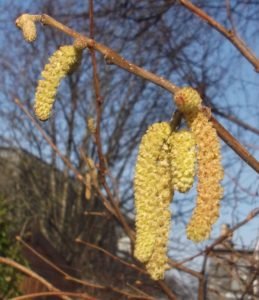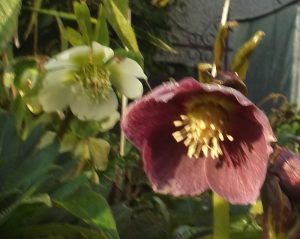
We have had two named storms in three days, which is something new. Now things are quieter, but still very wet and the burn behind the house, which is normally nothing more than a deep damp ditch, is running noisily down the hill to join the Lightburn and into the Clyde. I went out to see if the greenhouse and all my pot plants were intact, which they were, mostly, though I think I’ve lost a cowslip seedling. The quarter tray it was in was spun round and upended, and the contents are probably halfway across the garden.
But the new warmer temperatures have spurred the garden into growth. Everywhere I look there are daffodil, snowdrops, tulip shoots and iris springing up, even a lone and battered crocus underneath the roses.

The first witch hazel blssom is out and many of the perennials in the garden are putting up vigorous shoots. Of course, the place is a mess, as I try not to cut everything down too vigorously – if you leave the dead stems it provides hibernating spaces for ladybirds and other useful creatures, but I must admit, I’m longing for a dry day to get out and create a little order and room for the new plants. I have bought many of my seeds now, mullein and agrimony, soapwort, wormwood and mugwort. I’ve tried several times to save seeds from the wild plants down along the Clyde Walkway, but without success, so I bought some from Earthsong Seeds, whose seeds worked pretty well for me last year.
I have some more ordinary seeds too, thanks to my grandson who say he wants to grow rainbow carrots and lettuce and some gigantic yellow sunflowers with me, and I’m going back to my favourite Harbinger tomatoes. I tried Ruthje from Vital Seeds last year, but I wasn’t impressed, though I think the (relatively) cold summer, and the late start might have had a lot to do with it. And now my fingers are itching to get started.
The birds are getting restless too. Before the cold snap there was a definite increase in birdsong, though it seems to have tailed off a bit, and the pigeons are playing kiss chase in the cedar tree two gardens down. There was a robin staking its claim to one of the hawthorn trees along the burn, and the magpies are playing King of the Castle along the rooftops. It’s been a long dreary January, but finally, we are inching towards spring.



